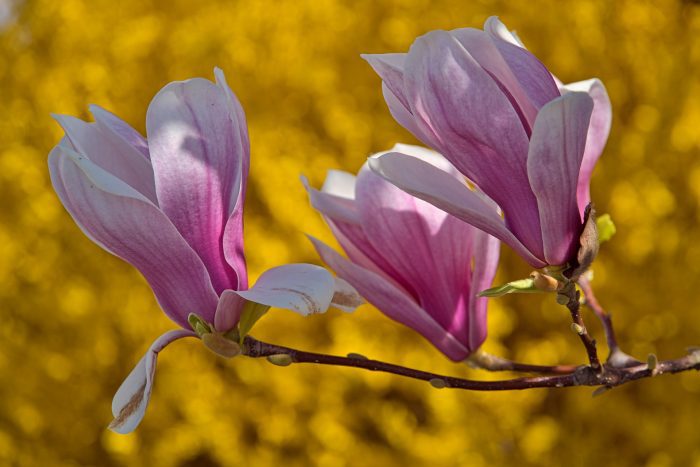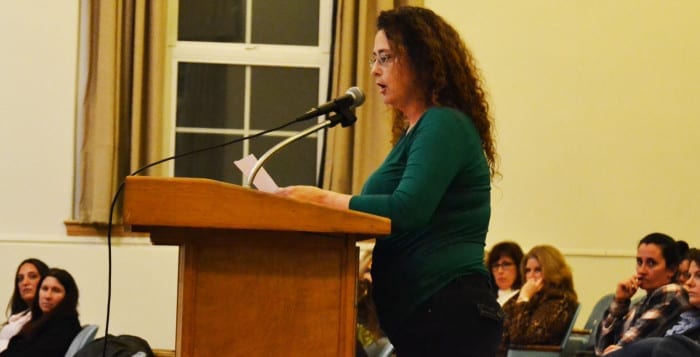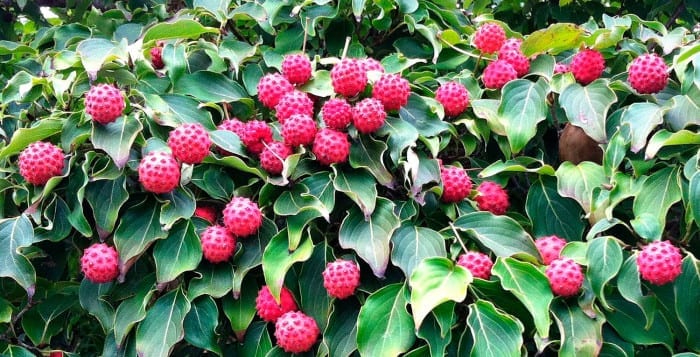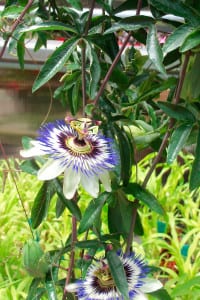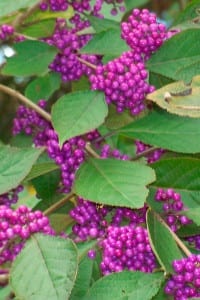By Leah S. Dunaief

As I drive along the local roads, the sight of the bright yellow forsythia, the symphony of pink cherry blossoms, dogwood and magnolia and the yellow daffodils waving” hello” uplift my spirits and bring me joy. Yes, it’s spring, glorious spring! And the weather could not be more cooperative. We have been able to shed our heavy jackets, sweaters and such, and even give our air conditioners a brief trial run when the temperature hit the high 80s and stayed there for a couple of days. Best of all, we know this splendor is early, and the beautiful season, when Nature festoons the earth, is just beginning.
At one and the same time, the news about human activities blackens the world. Every day, yes every day, we wake up to the news of more mass shootings, more homicides. Because a teenage boy rings the bell of the wrong house on his errand to pick up his younger siblings, he is then shot to death. Because a car full of teenage girls pulls into the wrong driveway, shots are fired at the vehicle as it is trying to back out and one young woman is killed. Because yet another unarmed young man tries to run away from the police at a traffic stop, he deserves to be murdered.
What is happening to our country?
These horrors are occurring because people are afraid. Unless he has cognitive issues, why would an 84-year-old man answer his door with a gun? Why would someone inside a house shoot at a car that just entered the driveway unless they were terrified for themselves. This is more than a mental health issue, which might be blamed for shooting up employees in a bank. This is about cold, petrifying fear.
Thank heavens that Nature goes about her business transforming the earth into a paradise because we humans need something to offset the hell we are creating. People are asked if they are afraid for their children to go to school. To school, which was always the safest place to get children off the streets. Now more than three quarters of the parents say, “Yes.” And so do more than half of the children in elementary school and middle school. Never mind COVID-19 and inflation. They are passing, or will eventually. But the violence that we are living with? That just seems to be getting worse.
What can we do? We know that bad things happen when good people do nothing. But how can we improve our society?
One answer, I believe, is to turn to family and community. Strong family support and a tight-knit community offer security that is close at hand. Parents who let their children feel the love, who set standards and limits, who teach values by example and talk to their children about fears, who are there when most needed — these actions go a long way toward offering meaningful response to a frightening world.
For us adults, meeting the neighbors and creating a Neighborhood Watch for mutual protection is both a safety and social advantage. Participating in one of the many local non-profits, from Rotary to the civic associations and PTAs in the schools to the historical societies to actually running for office can strengthen a sense of belonging and empowerment.
And then there is kindness. I’m not sure how one goes about teaching kindness except by practicing it. Kindness offsets bullying, it makes both the giver and receiver feel noticed and valued. Who has time to visit a sick neighbor? But then, we all have time to hold the door open for the person behind us, and for that person to thank the door holder, or to let the car waiting to join the line of traffic enter in front of us and in return see a thank-you wave.
And there is always Nature for respite. A walk in the park or along a beach can be restorative. Nature, too, can be violent, but storms pass. With effort and focus, perhaps human storms can, too.

